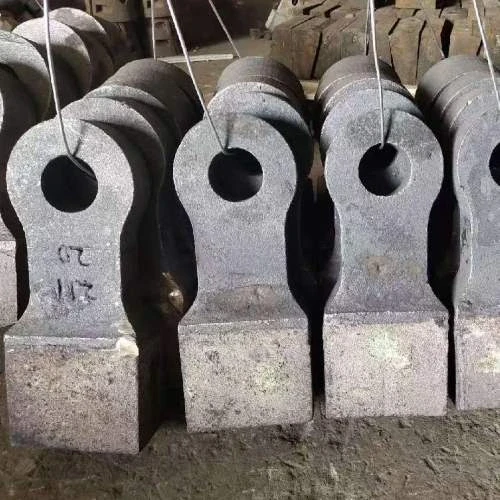Oct . 10, 2025 12:45 Back to list
Manganese Steel Plate: Hadfield Toughness—Why Choose Us?
A field guide to manganese steel plate—from spec sheets to the quarry floor
If you work around crushers, chutes, or shot-blast cabinets, you already know the quiet hero: the manganese steel plate. I’ve watched it shrug off gouging that would chew through standard AR in weeks. To be honest, it’s not magic—just materials science done right and matched to the job.

What’s trending in 2025
- Thicker sections (up to 120 mm) for mobile crusher wear packages; surprisingly common now.
- Cleaner heats via EAF + LF refining to cut inclusions—customers say fewer edge cracks during forming.
- More UT acceptance to ASTM A578 Level C on large plates, especially for OEM liners.
- Sustainability push: mills publishing EPDs; real-world CO₂ figures still vary by melt route.
Typical product specifications
| Grade | Hadfield (Austenitic) Mn Steel, ASTM A128/A128M Grade B2 ≈ |
| Chemical composition (wt%) | C: 1.05–1.35; Mn: 11.0–14.0; Si: ≤1.0; P/S: ≤0.05 (typical ranges; real-world use may vary) |
| Delivery condition | Solution treated (~1050–1100°C) and water-quenched, flatness per mill standard |
| Hardness | As-quenched ≈ 180–220 HB; work-hardened surface ≈ 450–550 HB |
| Thickness/size | 6–100 mm thickness; widths to 2500 mm; cut-to-size and pre-drilled options |
| Testing | UT per ASTM A578 (Level B/C on request), hardness ISO 6506/6508, mechanicals per ASTM A370 |
| Certifications | EN 10204 3.1, ISO 9001 plant certification |
How it’s made (short version)
Materials: high-purity ferromanganese, low-P/S scrap, Si deoxidizers. Methods: EAF melt → LF trim → continuous or ingot cast → rolling. Heat treatment: full solution at roughly 1080°C and rapid water quench to lock in the tough austenitic matrix. Testing: UT (A578), hardness (HB/HRC as needed), tensile (A370), sometimes Charpy (E23). Service life: in primary crusher liners, I’ve seen 1.8–3.2× over AR400 when impact is high and sliding abrasion is moderate.
Where manganese steel plate shines
- Jaw/cone crusher liners, cheek plates, toggle seats.
- Dump truck bed liners, chute/hopper liners with impact loading.
- Shot blast cabinets, dredging cutter edges, rail crossings.
Note: it work-hardens under impact. If your wear is mostly low-impact sliding, a chromium carbide overlay might outlast it. Balanced selection matters.
Vendor snapshot (real-world buyer notes)
| Vendor | UT Level | Heat Treatment Cert | Lead Time | Notes |
|---|---|---|---|---|
| OEM Foundry (CD Chengda, Hebei) | ASTM A578 Level C (on request) | EN 10204 3.1 | 2–5 weeks | Origin: KIZUN Industry Zone, Luquan, Shijiazhuang. Can pair plates with high-chrome hammers. |
| Local Mill A | Level B standard | 3.1 available | Stock + 10 days | Good for quick replacements; limited heavy thickness. |
| Importer B | By lot | 3.1 or 3.2 (project) | 6–8 weeks | Competitive price; check dimensional tolerances. |
Customization and pairing
Cut-to-size nesting, plasma/oxy cut, pre-drilled countersinks, stud welding, and jig-matched liner kits. Many quarries pair manganese steel plate liners with high-chrome impact parts; for example, quenched high-chromium hammer heads from Hebei suppliers can improve front-end strike resistance while Mn plates absorb the heavy shock behind them.
Case study (quarry, Southeast Asia)
Swap: AR400 hopper liners → 12% manganese steel plate with 25 mm thickness and beveled edges. Result: liner life moved from ≈4 months to ≈10 months (2.5×), with fewer jam-related stoppages. UT certificate: ASTM A578 Level C; hardness after two weeks in service measured ≈500 HB at the impact zone.
Quick QA checklist
- Ask for solution treatment parameters and quench media details.
- Specify UT level (A578 B or C) and acceptance class before PO.
- Confirm machining strategy—Mn steel is gummy; use sharp carbide and generous coolant.
- Request edge conditioning to minimize microcracks on formed parts.
Side note: If you’re also sourcing impact components, the same Hebei facility that ships liners supplies High Chrome Hammer Head castings—stable performance and reliable quenching—handy to keep logistics simple.
References
- ASTM A128/A128M – Standard Specification for Steel, Austenitic Manganese.
- ASTM A578/A578M – Standard Specification for Straight-Beam UT Examination of Rolled Steel Plates.
- ASTM A370 – Standard Test Methods and Definitions for Mechanical Testing of Steel Products.
- ISO 6506-1 – Brinell hardness test; EN 10204 – Metallic products—Types of inspection documents.
-
Expert Insights on Fabrica de Molinos de Bolas: Industry Trends & Global Applications
NewsNov.24,2025
-
Expert Insights on Fabricantes de Bolas de Molienda de Acero: Global Applications & Trends
NewsNov.23,2025
-
Leading Fabricantes de Bolas de Molienda: Your Ultimate Guide to Grinding Balls
NewsNov.23,2025
-
Fabricante de Bolas de Molienda – Quality Grinding Balls for Efficient Industry
NewsNov.23,2025
-
Trusted Proveedores de Medios de Molienda for Efficient Industrial Grinding
NewsNov.22,2025
-
Proveedores de Bolas de Molienda: Your Guide to Top Grinding Ball Suppliers & Industry Insights
NewsNov.22,2025
Realted Products
















